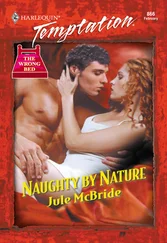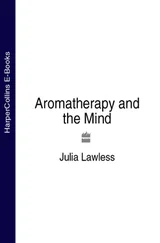
Thorsons
An Imprint of HarperCollins Publishers
77–85 Fulham Palace Road,
Hammersmith, London W6 8JB
www.harpercollins.co.uk
First published in Great Britain by Thorsons 1994
© Julia Lawless 1994 and 2001
Julia Lawless asserts the moral right to be identified as the author of this work
A catalogue record for this book is available from the British Library
While the authors of this work have made every effort to ensure that the information contained in this book is as accurate and up to date as possible at the time of publication, medical and pharmaceutical knowledge is constantly changing and the application of it to particular circumstances depends on many factors. Therefore it is recommended that readers always consult a qualified medical specialist for individual advice. This book should not be used as an alternative to seeking specialist medical advice, which should be sought before any action is taken. The author and publishers cannot be held responsible for any errors and omissions that may be found in the text, or any actions that may be taken by a reader as a result of any reliance on the information contained in the text, which is taken entirely at the reader’s own risk.
All rights reserved under International and Pan–American Copyright Conventions. By payment of the required fees, you have been granted the nonexclusive, nontransferable right to access and read the text of this e–book on–screen. No part of this text may be reproduced, transmitted, downloaded, decompiled, reverse–engineered, or stored in or introduced into any information storage and retrieval system, in any form or by any means, whether electronic or mechanical, now known or hereafter invented, without the express written permission of HarperCollins e–books.
HarperCollins Publishers has made every reasonable effort to ensure that any picture content and written content in this ebook has been included or removed in accordance with the contractual and technological constraints in operation at the time of publication.
Source ISBN 9780007110711
Ebook Edition © AUGUST 2014 ISBN: 9780008105785
Version: 2014–08–27
Dedicated to
NATASHA
Cover
Title Page
Copyright
Dedication
Lavender Oil – An Introduction
Part One: Lavender’s Medical and Historical Background
1 The Scent of Times Past
2 A Traditional European Folk Remedy
3 Modern Medical Evidence
4 Production, Chemical Composition and Quality Control
5 Summary of the Properties and Applications of Lavender Oil
6 Methods of Use, Safety Data and Storage Precautions
Part Two: A–Z of Health Care Applications
Abscesses & boils (furuncle); acne & spots; anxiety; arthritis & gout; asthma; bruises & bumps; burns; carbuncles; chickenpox; children’s ailments; cracked skin; cuts & wounds; cystitis & urethritis; depression; dermatitis & eczema; disinfectant uses; dyspepsia (indigestion) & flatulence; earache; epilepsy; fatigue; hair care; headaches; herpes; high blood-pressure (hypertension); immune system; impetigo; infectious illness; insect bites & stings; insomnia; jetlag; laryngitis; leucorrhoea & pruritis; lice (pediculosis); menopause; migraine; mood swings & hysteria; muscular aches & pains; nausea; palpitations (tachycardia); period pains; perfume uses; perspiration; pregnancy & childbirth; pre-menstrual tension; rheumatism; scabies; shock & vertigo; skin care; splinters; sprains; stress; sunburn; ulcers; whooping cough.
Part Three: Further Information
The Different Types of Lavender Oil
The Constituents of Lavender Oil
Keep Reading
References
Bibliography
Useful Addresses
Acknowledgements
About the Author
Other Books by
About the Publisher
Oh how happy I am not to be one of those ornamental flowers that decorate the border! I’m not at risk of falling into uncouth hands and am sheltered from frivolous discourse.
Unlike my sisters, the plants, nature makes me grow far from streams, and I don’t like cultivated gardens or land.
I am wild. Far from society, my sojourn is spent in deserts and solitude, for I don’t like mixing with the crowd!
… Free, I am free!
‘The Song of Lavender’ (‘La Chante de la Lavande’)1
The unique character or personality of lavender is evident from the words of this song, taken from A Thousand and One Nights . Originally a native of the Mediterranean region, growing at altitudes of up to 1,800 metres (nearly 6,000 feet) in the mountains of southern France, this beautiful yet tough and resilient plant has been cherished by all cultures alike, not only for its fine fragrance but also its valuable medicinal properties. It is one of the few herbs that has never gone out of fashion, for it has enjoyed widespread use from the earliest times to the present day. Lavender has always been a favourite!
Lavenders make up a small group or genus ( lavendula ) containing about 30 different species within the botanical family Labiatae . Several varieties of lavender are used medicinally, but the most valuable is the common or ‘true’ lavender L. angustifolia , also known as L. officinalis and L. vera . This hardy, evergreen shrub which grows to a height of about 1 m (3½ ft) becomes increasingly woody and spreading with age, and has a sweeter, more refined fragrance than any of the other varieties. Today, ‘true’ lavender can be found growing wild in Italy (Calabria), France (especially in Provence), on the eastern coast of Spain and right into North Africa. It is also commonly found in cultivated form throughout the rest of Europe as well as in India, Australia and the US.
It is generally assumed that the Romans were the first to introduce lavender to Britain, although the exact date of its arrival remains uncertain. The Feate of Gardening written by Jon Gardener in about 1440 mentions a plant called ‘lavyndull’ already growing in English gardens at the turn of the 15th century. Lavender adapted readily to the wet, cool conditions of the British Isles, and soon found a particular niche within the English gardening tradition:
Ladies fair, I bring to you
Lavender with spikes of blue;
Sweeter plant was never found
Growing on our English ground. 2
Lavender is still found growing in most English cottage gardens, often more for sentimental reasons than practical ones. Everyone is familiar with its fine silvery-green leaves and spikes of soft bluish-purple flowers with their familiar fragrance … a mix between herbaceous and floral, with a sweet, sometimes slightly sharp top note and a green, balsamic, hay-like undertone. The dried flowers have long been used in pot-pourris, herbal pillows and sachets, or bound together in bundles to scent household drawers. In dried flower arrangements lavender is one of the few plants that retains a strong long-lasting aroma after it has been cut, as well as keeping its lovely hazy-blue colour. Lavender was also once employed traditionally as a soothing yet uplifting nerve tonic, and the French used to make a tea using lavender, cinnamon and fennel to cure jaundice and act as a tonic for the heart.
There has been a great revival of interest in traditional herbal remedies over the last few decades in the West. This has emerged partly as a result of the general increase in environmental awareness and the need to ‘return to nature’, but also of a growing disillusionment with aspects of orthodox drug treatments. Aromatherapy, a ‘holistic’ form of healing which works specifically with the essential oils derived from plants, has become especially popular in recent years. Many essential oils, including lavender, are now readily available to a general public eager for knowledge on how to use them … but of all the oils, lavender is the most popular! This is not surprising, since lavender is perhaps the most versatile and useful of all essential oils used in aromatherapy today.
Читать дальше












